Do you know the meaning of kawaii [可愛い]? This Japanese word means something cute, pretty and stuff like that. Kawaii also involves sweet, kind, adorable, charming, precious, dear, and even tiny things.
This word is internationally known thanks to Japanese pop culture and anime. It is used to designate objects, accessories, clothes, animals and people that are beautiful and attractive. In this article, we are going to see a complete overview of Kawaii culture in Japan.
Table of Content
The origin of the word Kawaii
The origin of the word is believed to come from “kawayushi” [かはゆし] which refers to the feeling of sympathy for the other person's misfortune. We can see this usage nowadays in the expression “kawaisou” [可哀想] which means poor, pitiful, poor thing.
The origin of kawaii also comes from the old word “Itawashii” [労わしい] which means moving; unfortunate; saddening; pathetic; heartbreaking. Some synonyms found in other dialects are megushi, menkoi and megoi.
The word "Kahayushi" was established in the short form of "Kahohayushi", and the verbal word was "Kawayui", which was later changed to "Kawaii". It originally meant "embarrassing" with the feeling that "the other person is incredibly superior.
Over time the word began to refer to the feeling of caring for a partner in a sorry state. It is difficult to understand the origin and changes that this word has had over the years, or how it got such an opposite meaning.
The word is made up of the characters (可) meaning acceptable and (愛) meaning love.

What does Kawaii mean?
We already know that this word can mean something related to cuteness. More specifically, it is a Japanese adjective used to describe a person's feeling of affection, such as primacy or love, in some sense.
Derivatives include Kawarashii [可愛らしい] which means charming, sweet, and cute. We also have the verb Kawaigaru [可愛がる] which means to love, care, be affectionate, treat tenderly, pamper, show favoritism, be partial, caress and mock.
The word “Kawaii” has a strong connotation of expressing affection or attachment to young or small things. For this reason, in the past it was considered rude to use the word for adults, mainly because of its origin, except when it was used between lovers.
With the growth of kawaii culture, the term ended up becoming common for any usage, be it of people or lovely objects. Young women often use the term with those who are somehow superior to them.
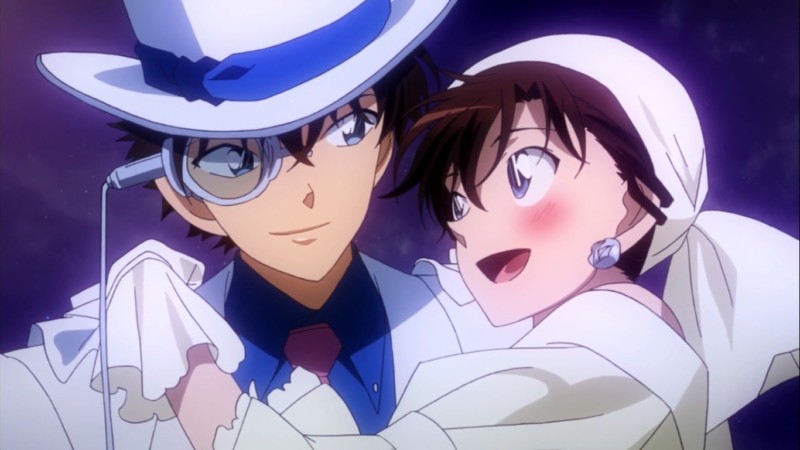
What is considered Kawaii?
In modern times, even artificial objects that do not have the characteristics of humans and living beings can be recognized and evaluated as “cute”. We can easily come to a conclusion of something cute without any explanation.
Even the way things in Japan can be considered Kawaii. Curved shapes like circles and spheres are more likely to be rated as “cute”, so even the style of scissors can be labeled kawaii scissors.
According to an evaluation experience between men and women, it was concluded that there are cute colors like yellow. It has also been scientifically proven that small things tend to be cuter.
Objects with textures that evoked soft tactile sensations were classified as “cute” rather than hard things. A teddy bear or something fluffy is naturally considered something cute by everyone.
Sometimes “kawaii” is used as an expression of attachment to some personal object, even if it is not pretty. Generally, personal tastes may not be understood by the vast majority, unless they are related to a niche or hobby.
In addition to the original meaning of the word "Kawareru", the verb form of "Kawaii" also refers to the act of favoring or caring for someone of a lower rank, or in a lower situation. Does this meaning make sense? We will see?
A baby's characteristics, morphology and behavior are instinctively "protected" and "loved" by humans. The same thing happens with animals, when they are small and helpless, we think they are cute, we love and we want to protect them.
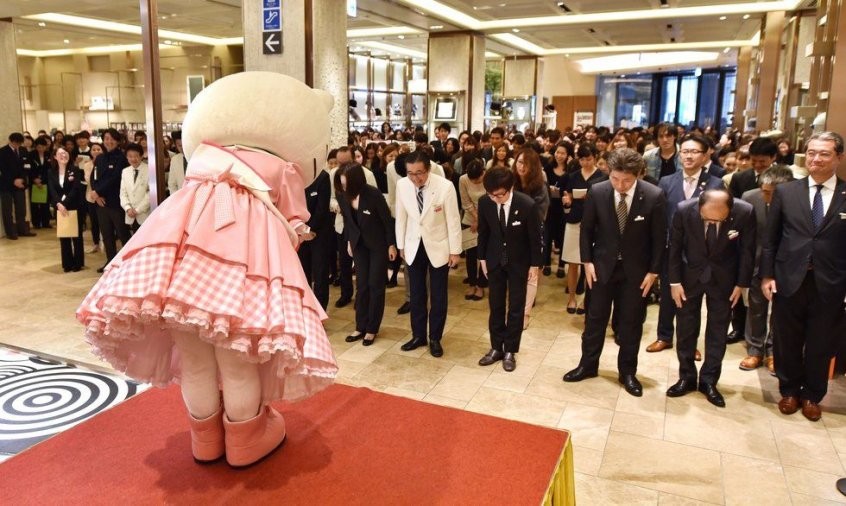
The History of Kawaii Culture
The first vestiges of this culture appeared in the Edo period (1603-1868), where woodcuts known as dijinga depict pretty girls. At the end of the Edo period, some artists were already making illustrations that give rise to the term.
Yumeji Takehisa and Katsuji Matsumoto were one of the great fathers of Shoujo illustrations of cute girls. They drew cute girls with big eyes, which was often considered vulgar. Even because the word has already been used to refer to people of low social class.
Read also: Why do manga and anime characters have big eyes?
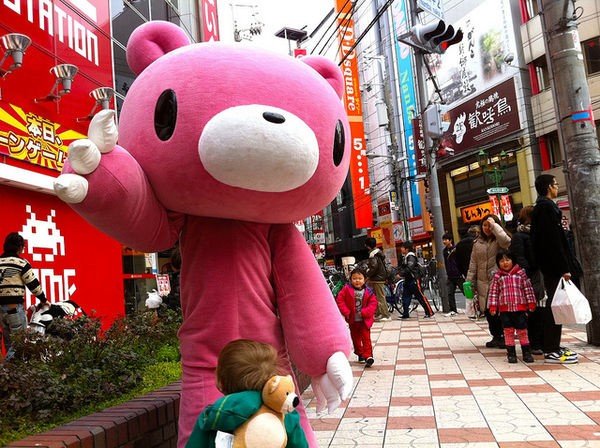
Kawaii as an aesthetic concept had its beginnings in the 70s, with the growth of the Japanese economy and the commercialization of products related to mascots and characters from anime and manga. Cute girl illustrations, Shoujo manga, and product marketing were responsible for this phenomenon.
The great representative of the cuteness BOOM is the character “Hello Kitty”. The Japanese like cute things, no matter their age! Cute elements can be seen practically everywhere in Japan, in big companies, markets, advertisements, TV advertisements, video games, planes, cars, etc.
This word may also come from China, as they use "Kě'ài" [可爱] there to designate something beautiful, fluffy or adorable.
It is not common to call a man kawaii, but women often use the term: "Kakkoii [かっこい]" for this.
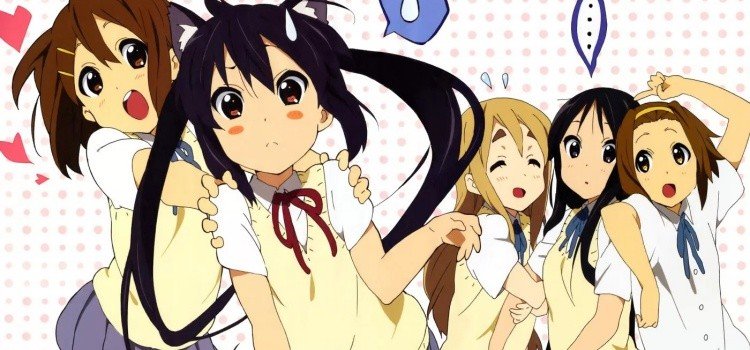
Kawaii and Burikko Culture
There is a Japanese sub-culture called “Burikko”, it became popular among 12 and 18 year old girls in the 80's. About 50% of the girls at the time wore something related to Burikko culture.
Burikko [ぶりっ子] is a term used to refer to women who act and speak childishly or innocently to get attention. This culture even affects the way girls write.
The original word Burikko is composed with the ideogram [振] which means agitation, naughty and swing. Nowadays it is written only with Hiragana. The word can be translated as fake child.
The adjective kawaii emerged at the same time that the writing Burikko-ji and Maru-ji, Koneko-ji, Manga-ji became popular. This writing was used by teenagers who wrote rounded figures and happy faces (emojis).

Thus, nowadays everything that is rounded and happy can be considered kawaii. We can notice that most characters from anime and mangas have large eyes and rounded heads. Especially Chibi characters.
Childish, innocent and naive behavior is also considered kawaii. It doesn't mean they are childish, they are just trying to be cute and use innocent expressions that can even indicate eroticism.
We also recommend reading: Burikko - The Japanese girls who have too much cuteness!
Different types of Kawaii
The word youth from the 1990s gave rise to different terms related to kawaii, which may be a little unfamiliar in the West, but worth mentioning:
Erokawaii - Cute and sexy
Erokawaii [エロかわいい] is a composite of “erotic” + “cute”, a concept of cuteness that includes sensuality and sexual attractiveness. This term is believed to have surfaced in 2003 on forums when someone called Sophie from Star Ocean 3 from Erokawaii.
Around 2004, singer Kumi Koda voiced her own sexy fashion called "Erokawaii", being recognized as a general term in the fashion world, thus this term was born. Erotic beauty is popular in fashion magazines, giving rise to other expressions such as "erotic cool" and "erotic cool cute".
The clothes called Erokawaii mix the sexy with cute. As a sexy element, there is a lot of skin exposure, lingerie style design, use of transparency, black and others. Cute elements include the use of ruffles, bows, lace, polka dots, and pink.
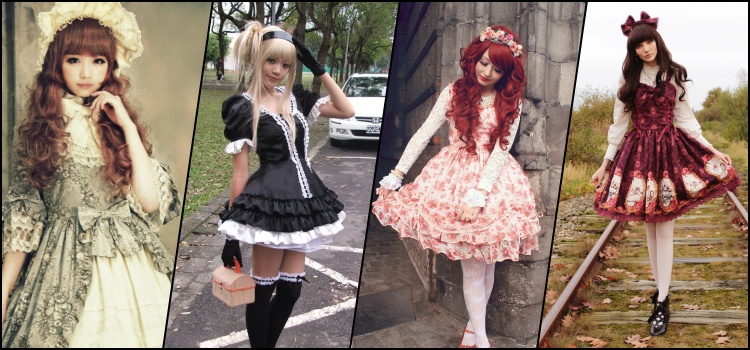
Busakawaii - Ugly but cute
The term "Busa-kawaii" [ブサかわいい] is a compound word of "ugly" + "cute". It is usually used for pets and women. It refers to a woman who is beautiful and charming, even though she may appear ugly at first glance.
When the term “kawaii ugly” is used on pets, it usually describes the beauty of a pug or bulldog or other animals that are apparently ugly but are actually cute and charming.
Kimokawaii - Cutest disgusting
Kimokawaii [キモかわいい] is a compound word of "Kimoi" which means disgusting, scary or weird together with the word "Kawaii". That is, it is something that despite being disgusting and strange, can be considered cute or cute.
The term was first used by young people in the late 90s, and came to refer to characters like dancing babies. Initially, the term was not used for humans, but when comedian Angirls became popular in the 2000s, his surrealist behavior was described as "frighteningly cute".
While "scary" and "cute" are contradictory adjectives, there have been many instances of "monsters" like Godzilla being called kawaii. Even outside of Japan, there have been examples, such as Gremlins and SpongeBob, that despite being weird are cute.
other kawaii terms
In addition to the main ones mentioned, we have some others such as:
- Yurukawaii - Combination of something relaxed and loose + fluffy;
- Kakkokawaii – Combination of cool + cute; Used for compact cars.
- Kireikawaii - Combination of cute + fluffy;
Read also: Kei Jidousha – The mini cars with 0.6 engine
How the West views kawaii culture
Even though this is prevalent throughout Japan, Westerners regard kawaii things as childish or feminine, not understanding or accepting the way it is pervasive in Japanese culture.
Still, the west is heavily influenced by kawaii culture. Westerners are not entirely wrong in claiming that this culture is childish, in fact it is based exactly on children, animals and babies.
It turns out that the round characters with big eyes, colorful clothes and hair, thin voice, strange attitudes and gestures and different styles end up bothering Westerners who consume certain media such as games, drawings and manga.
Westerners end up thinking that these media are made especially for children. The Japanese, on the other hand, do not discriminate things by saying that something is childish or feminine, they accept it with open arms and consume the content as they are.
In fact, both games and Japanese Anime are made with adults and teenagers in mind. There is no such thing as cute being Childish, Japan breaks that taboo, and does it very well. In fact, the prejudiced view of cuteness in the West reflects its security.
If cuteness is instinctively linked with the desire to protect and love, the cultural absence causes love and affection to be left aside, so in the West we have a growing passion for violence and a great ignorance when it comes to cuteness.

Why do the Japanese like cute things more than the West?
Kawaii culture was, in many ways, shaped by the desire to end the aggressive militaristic past. The efforts of the media and commerce ended up culturally strengthening the Japanese taste for cute things.
Cuteness is sometimes associated with fantasy and immortality. Being cute with the illusion of positive health, which is the complete opposite of mortality. Most Americans value the freedom to enjoy life, regardless of extreme danger.
East Asians in general are not good at expressing their real emotions in public due to fear and shame, in which they were heavily influenced by Confucianism which emphasized the importance of harmony between people.
Cuteness served as a buffer for a person to hide the true intention from within. Westerners, on the contrary, need to express their true opinion to gain respect and trust, thus generating a bit of hypocrisy and two faces.
Cuteness is a kind of positive image that makes a person feel happy, safe and relaxed from the harsh realities of life, especially in Japan where one has to always follow strict rules everywhere and work overtime. This kind of generates profit to the market, increasing the reach of kawaii.
We recommend reading: Honne and Tatemae - Knowing the two faces

Sub-Cultures of the Kawaii Phenomenon
In addition to burikko, there are several other sub-cultures, types or categories related to the kawaii phenomenon. Let's look at some kawaii fashion subcultures or styles:
- Gurokawaii – Refers to something beautiful and grotesque at the same time. People who wear heavy makeup can fit into this subculture.
- Kimokawaii - Refers to something cute and scary at the same time.
- Busukawaii – Something that is ugly and beautiful at the same time. Probably someone who, in an attempt to look kawaii, remained ugly.
- Erokawaii - Something cute and sexy;
- Shibukawaii – Refers to the more casual kawaii style. Every day the person looks beautiful without doing much, just wearing a simple piece daily.
Most other types and styles of fashion use aspects that delve into kawaii culture such as lolitas. You can find these and other kawaii fashion styles by visiting the Harajuku neighborhood.
Kawaii is also strongly linked to Moe, a word that can also be used to refer to someone who is adorable, cute, and handsome. The word is usually used for girls who have the following characteristics: Shyness, Kindness, Beauty and Innocence.
We also recommend reading:
- Meanings and differences between Lolita, Loli and Lolicon
- Moe moe kyun – What is the origin and meaning of moe?
- Japan Style Guide – Visual Kei, Decora, Harajuku
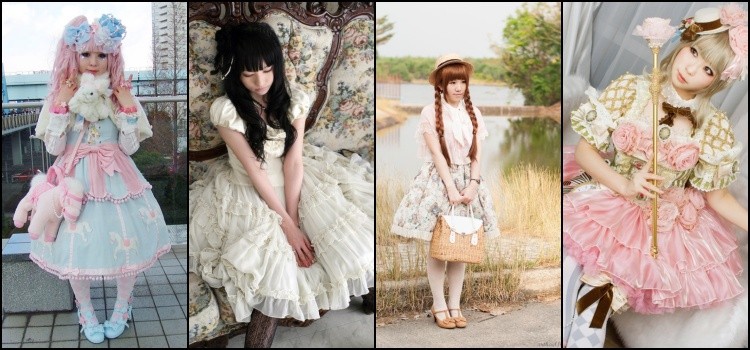
In addition to the whole country participating with the culture, the population collaborates with the following other styles and culture:
- Most Japanese young people love to decorate their cell phones with stickers and trinkets;
- There are many cars filled with stuffed animals or stamped with some kind of character;
- The Kigurumi fashion, Cosplay, Decora style, and also Japanese lolitas are part of this concept;
- Even Japanese cuisine is cute:
Read also: Kigurumi – Animal Costume and Japanese Pajamas
Kawaii - Examples of cuteness in Japan
Kawaii culture is quite exposed in Japan everywhere. Just walk into a gift shop to find thousands of kawaii things. It's not just the products for sale, but even the advertisements are cute.
Believe it or not, this is a police poster asking people to report a crime:
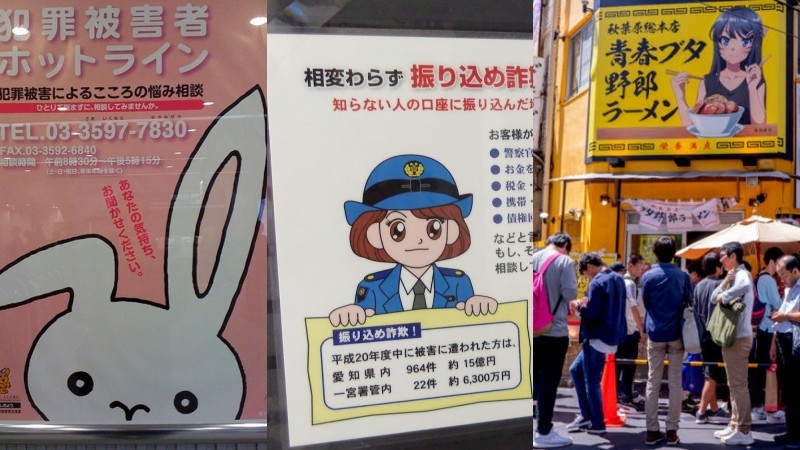
Many companies, small and large, use “cute” mascots to showcase their products and services to the public. Let's see some examples below:

- Pokémon characters adorned the side of All Nippon Airways jets.
- Banco Asahi used Miffy, a character from a Dutch series of illustrated children's books, on some of its ATMs.
- Monkichi, a little monkey, can be seen on the packaging of a line of condoms;
- All 47 prefectures in Japan have a cute mascot. Slogans for almost everything have to be cute.
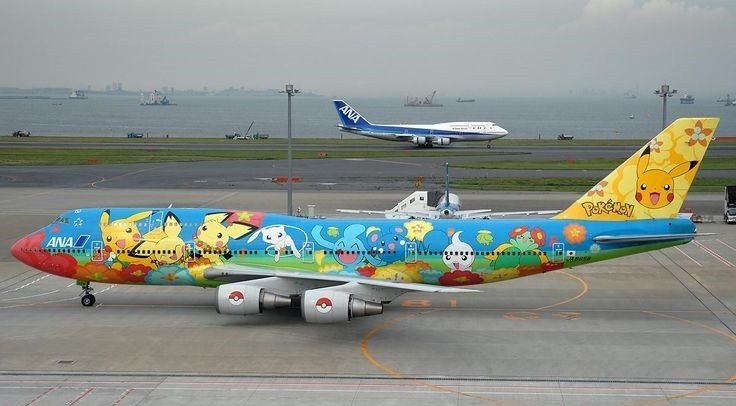
- The Japanese post office also uses other mascots, for example, on stamps;
- On Japanese roads, we can see trucks emblazoned with Hello Kitty figures and other cute characters;
- There are several trains customized with anime and cute things.
- In Japan, there are islands called Rabbit Island and Cat Island, which attract many visitors due to their residents.
- Each police force in Japan has its own mascots, many of them adorning the front of koban (police boxes).
- There are several Maid Cafes and Cat Cafes spread throughout the country;
- The barricades used in the construction and renovation of roads in Japan are cute and have some character. Search for pictures of [単管バリケード].
To learn more, also read:
- Okunoshima – The famous Rabbit Island
- Maid Cafe – The maid café in Japan
- Neko Cafe – Shall we play with the cats?
- Koban – What to do at a police station in Japan?
- Nekojima - Get to Know 20 Cat Islands in Japan
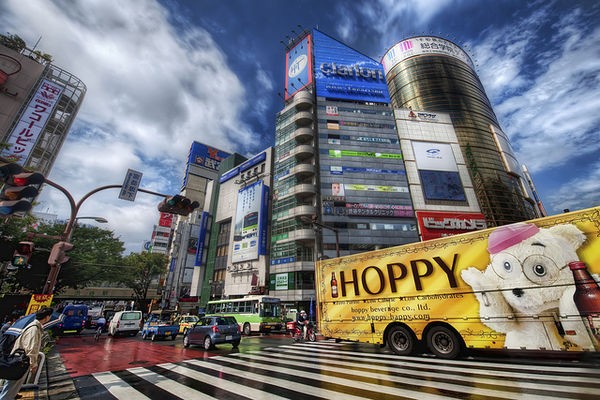
Why do Japanese people like Kawaii things?
Some say that this culture was born as a movement against traditional Japanese culture and the social pressure imposed on young people when they finish their university studies. Others believe that kawaii culture was born out of a desire to be cared for and to be loved.
At a time when people are increasingly isolated and have less time to have fun, consuming cute products is a way to reduce loneliness and relieve stress. On the other hand, the excess of products with characters ends up blurring the limits between what is a joke and what is not.

Despite sub-cultures and fashion styles losing strength every year. Cute things are still going strong in the media and advertising across the country. Increasingly reaching greater acceptance in the West, thanks to anime, games and manga.
What do you think about this gigantic aspect of Japanese culture? Did you know its meaning?
The most kawaii anime of all time
I hope you enjoyed this article, if you liked it share and leave your comments. Before finishing I will also recommend some very Kawaii anime for you to get an idea of this concept:
K-On – An almost mandatory music anime for anyone who wants to watch something cute and moe. It tells the story of a band of cute girls who are in a light music school club.
Read also: Top 15 Music anime + Complete List

Kimi ni Todoke - One of the cutest and most innocent romances ever. In this story you follow the romance of a girl called Sawako who is bullied for her name that reminds her of the girl from the movie Called.
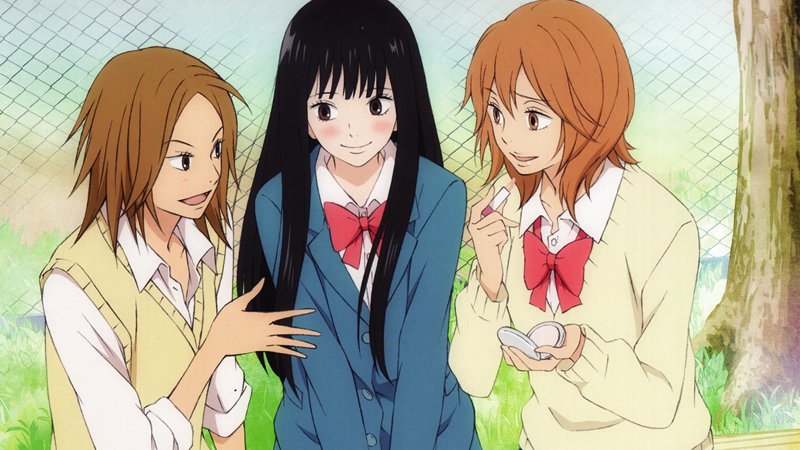
Ao Haru Ride – Another very popular and cute anime that tells the story of two young people in love, but things didn't go very well. After meeting again, the girl tries to get closer to him, but he apparently has indifferent feelings.
Read also: Cute Anime – The best kawaii, cute and moe anime

Other Cute Anime I recommend:
- Acchi Kocchi;
- Red-haired Snow White;
- To spring, to dawn;
- Bokura ga Ita;
- Clannad;
- Is the Order a Rabbit?
- Golden Time;
- Hanamaru Kindergarten;
- Hetalia Axis Powers;
- Sound! Euphonium;
- The President is a Maid!;
- From Me to You;
- Love Live and other idol anime;
- Lovely Complex.
- Mikakunin de Shinkoukei;
- Minami-Ke;
- Nana;
- Non Non Biyori;
- Ore Monogatari;
- Romeo x Juliet;
- Shigatsu wa kimi no usage;
- Shinryaku! Ika Musume;
- Sukitte II na yo;
- Suzumiya Haruhi no Yuuutsu;
- Toradora;
- Yuru Yuri;
- Yuyushiki;
- Zero no Tsukaima;
Cute Aggression - The Kawaii Wish
We can't talk about Kawaii without mentioning “Cute Aggression” [キュートアグレッション]. This is a need, urge, or urge to pinch, squeeze, or eat something fluffy. Which explains the use of kawaii in Japanese media and commerce.
When a person sees something that is very beautiful, they may feel like biting or squeezing. This is explained as the brain's defense reaction when it comes into contact with something that is too cute, as an out-of-control reaction.
Things like cute animals or puppies sticking their heads out of the car, an overwhelming sense of cuteness. Japan uses Kawaii as its main form of marketing and lifestyle, which also results in a peaceful culture without violence.
What did you think of this long article talking all about Kawaii? I hope he explained a lot about the term and its culture. I hope you understand why Japan is such a peaceful and lovely place, thanks to the kawaii culture. What do you think? Do you agree with such an opinion?
